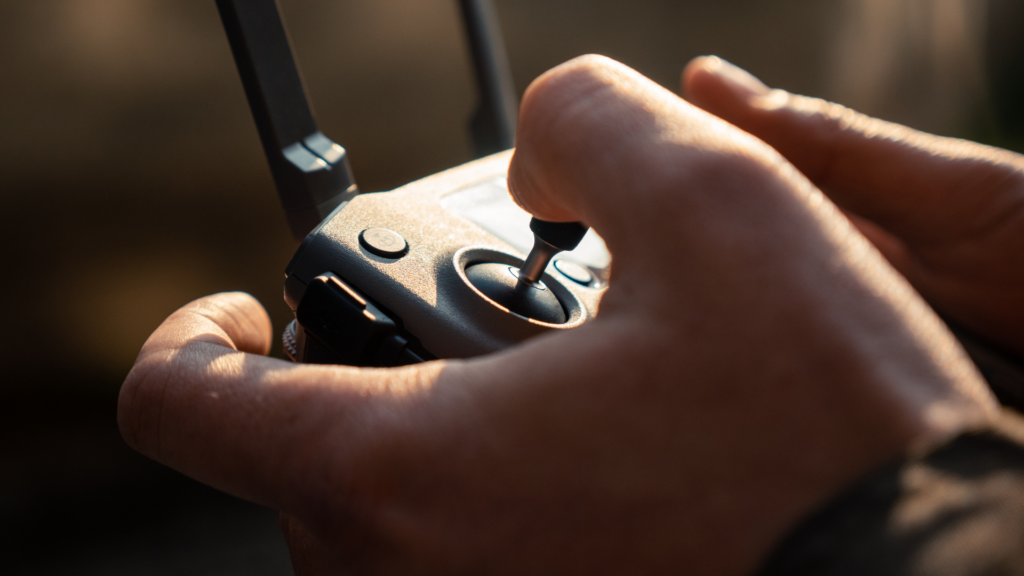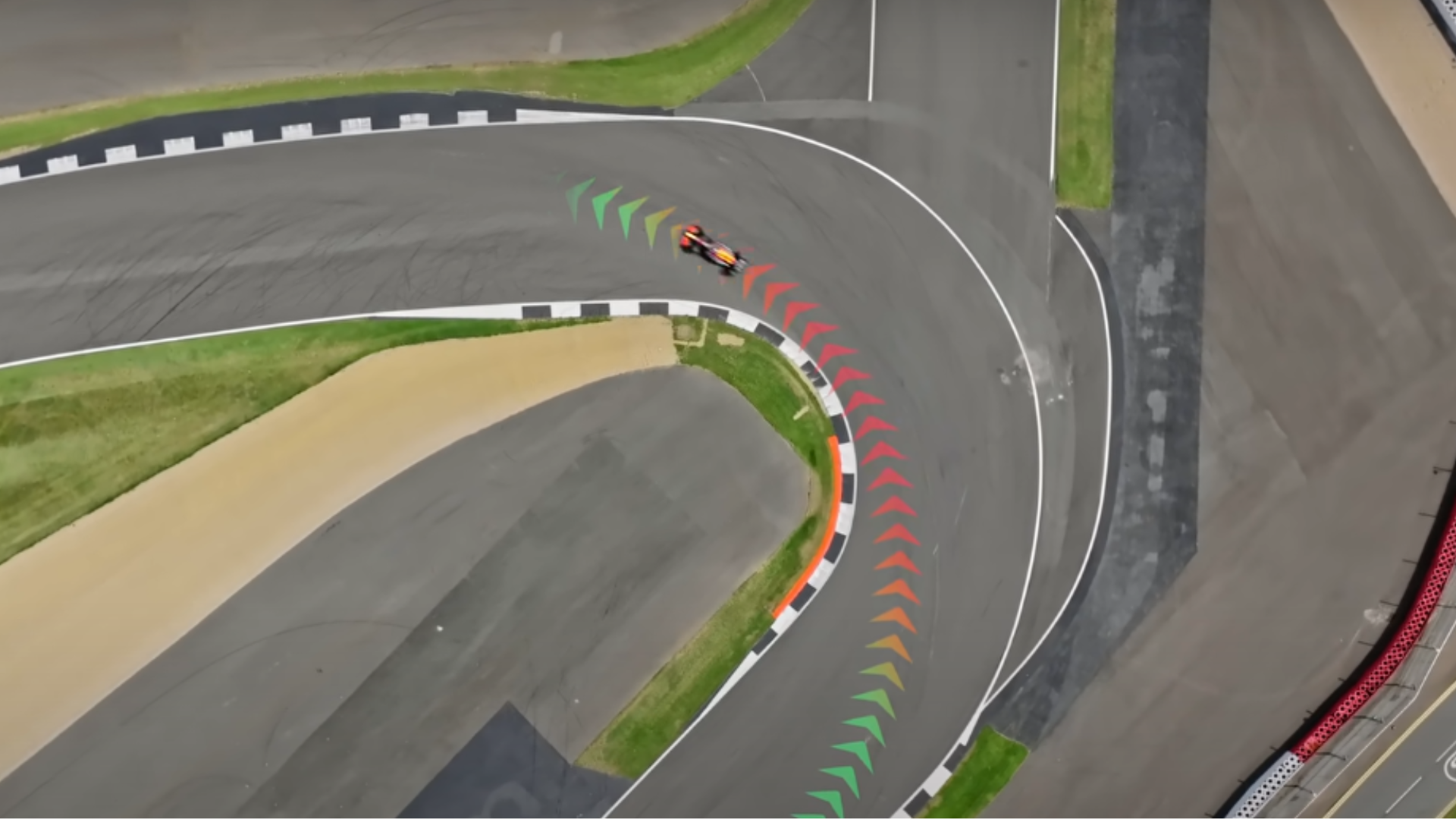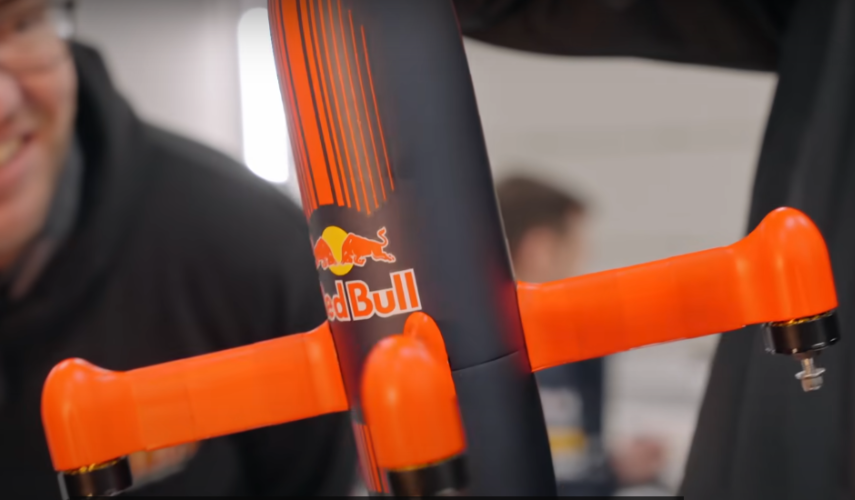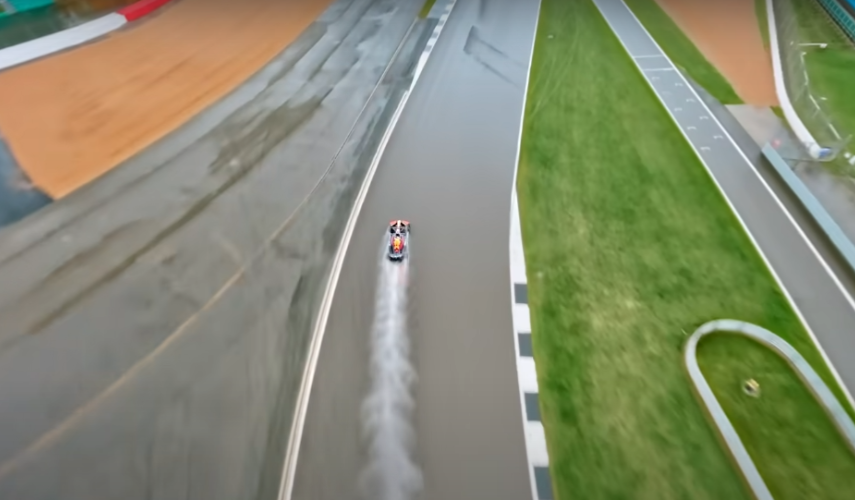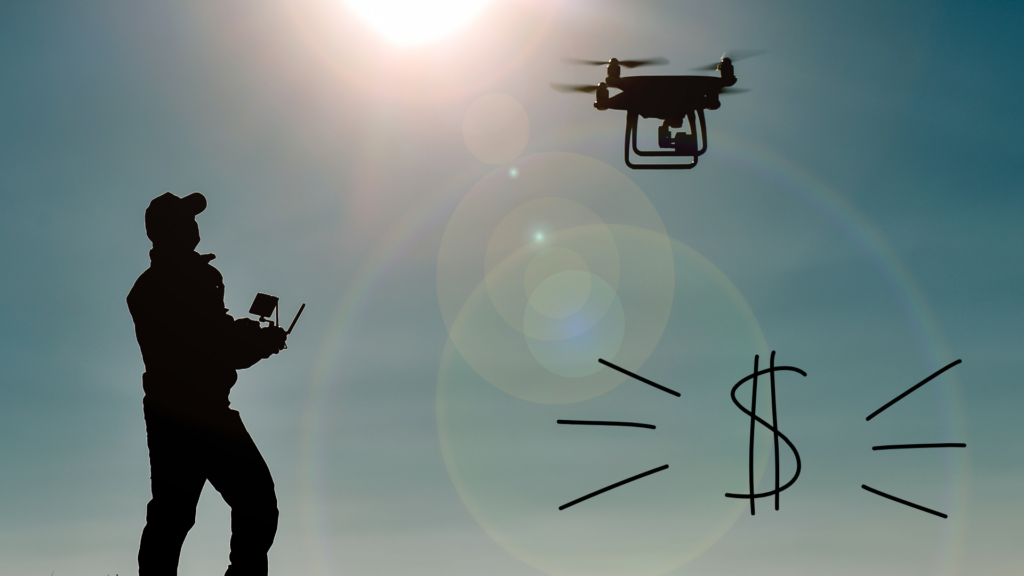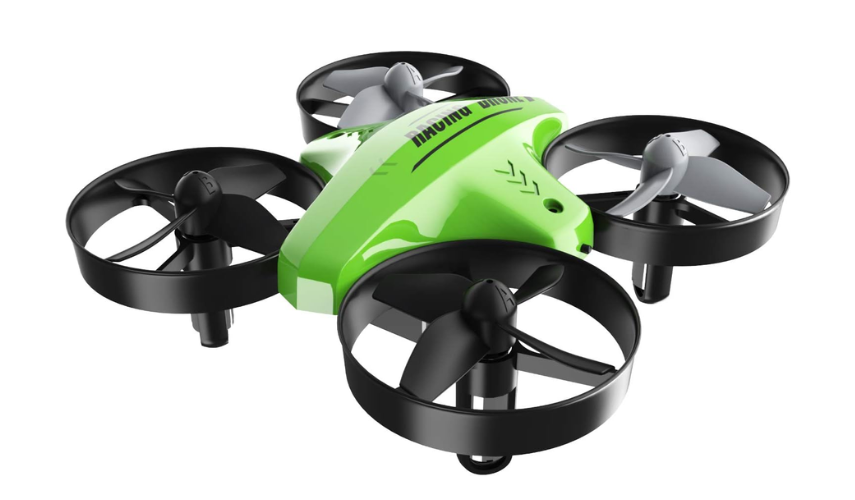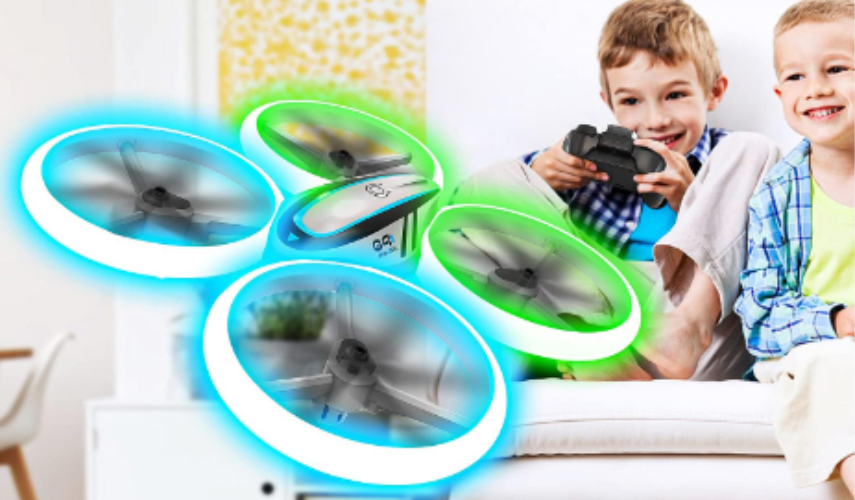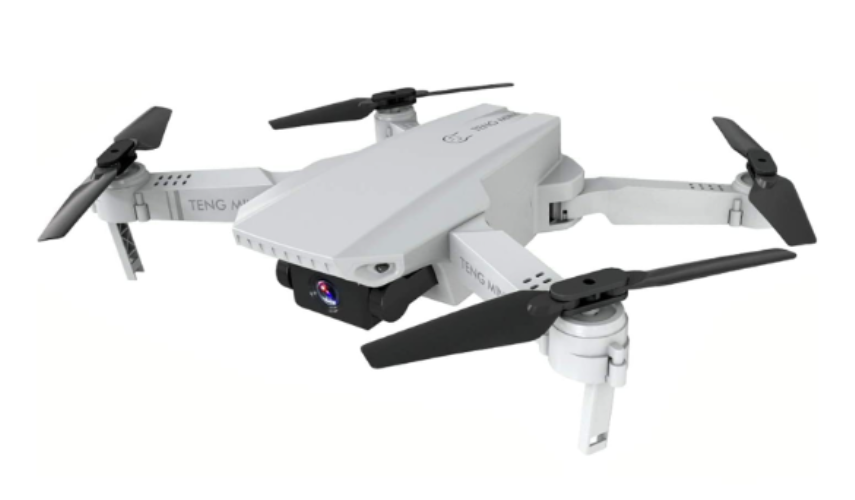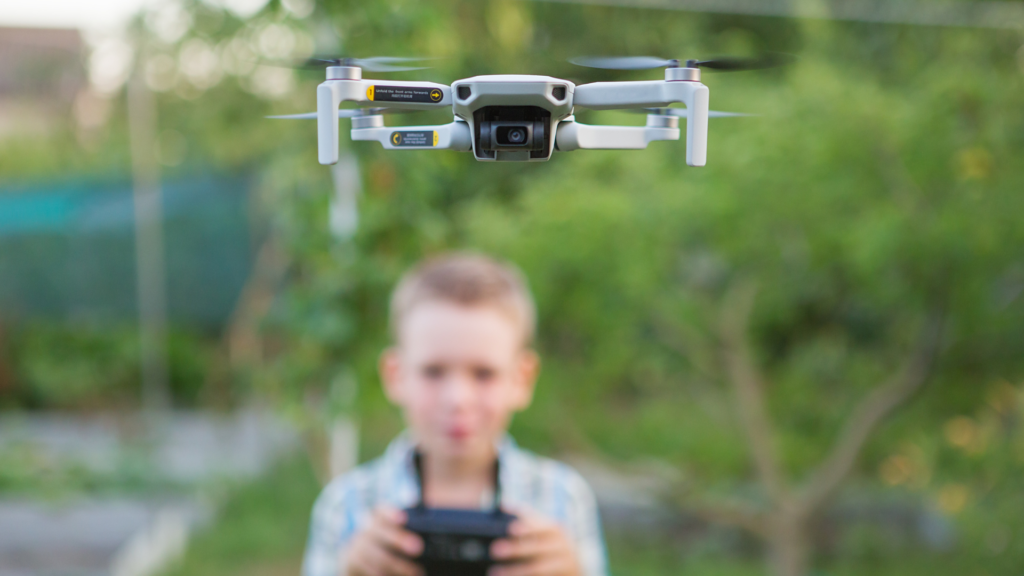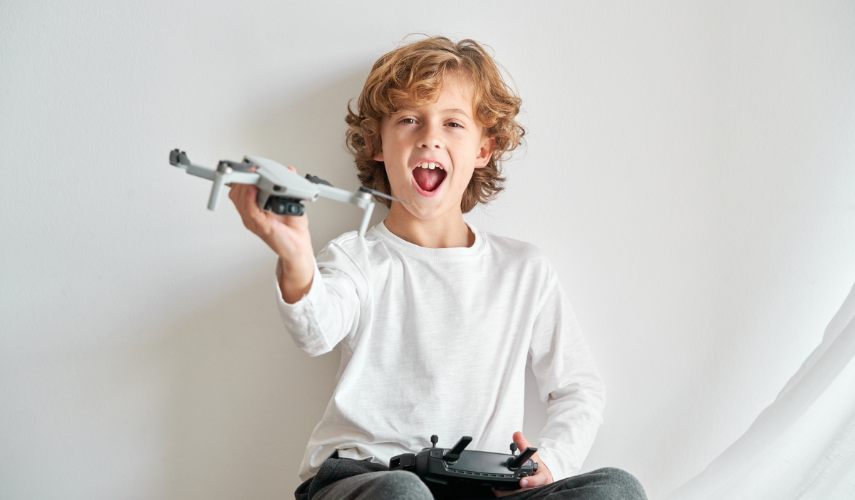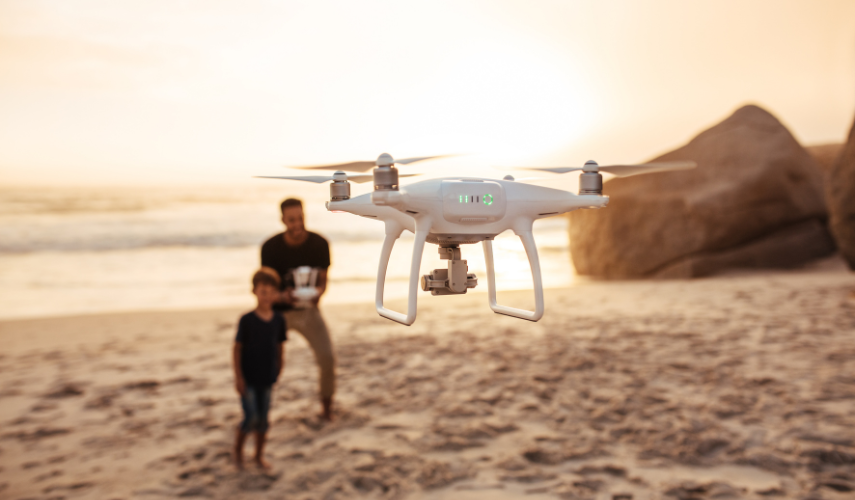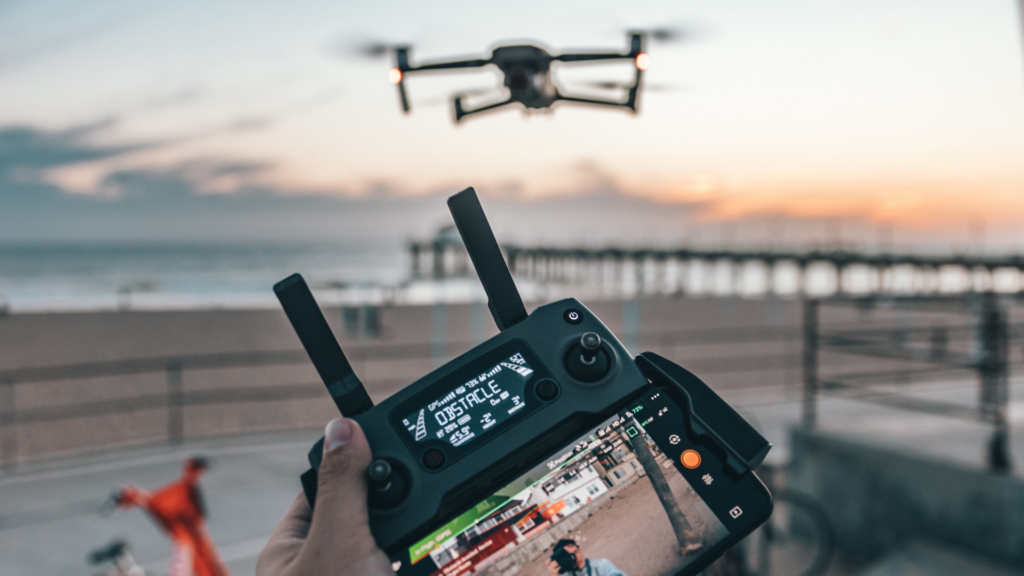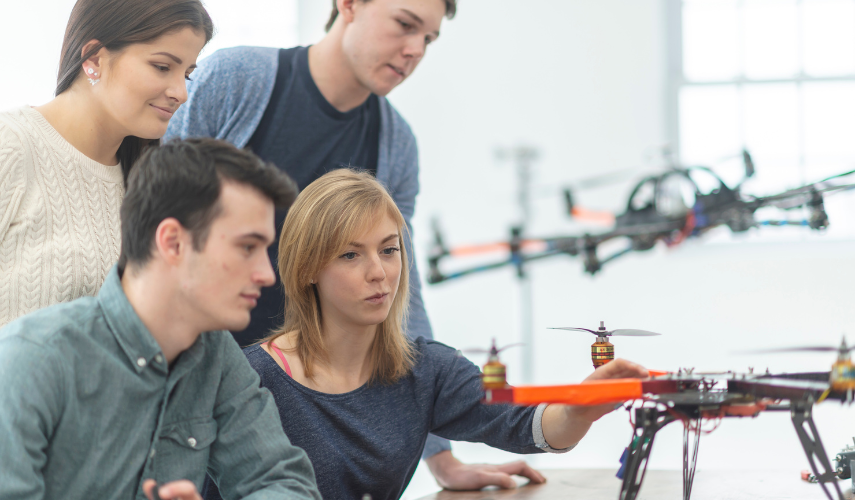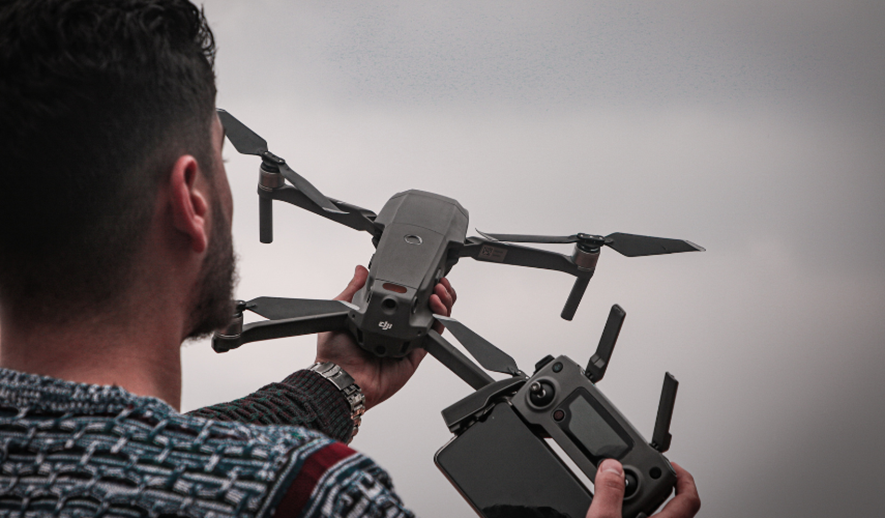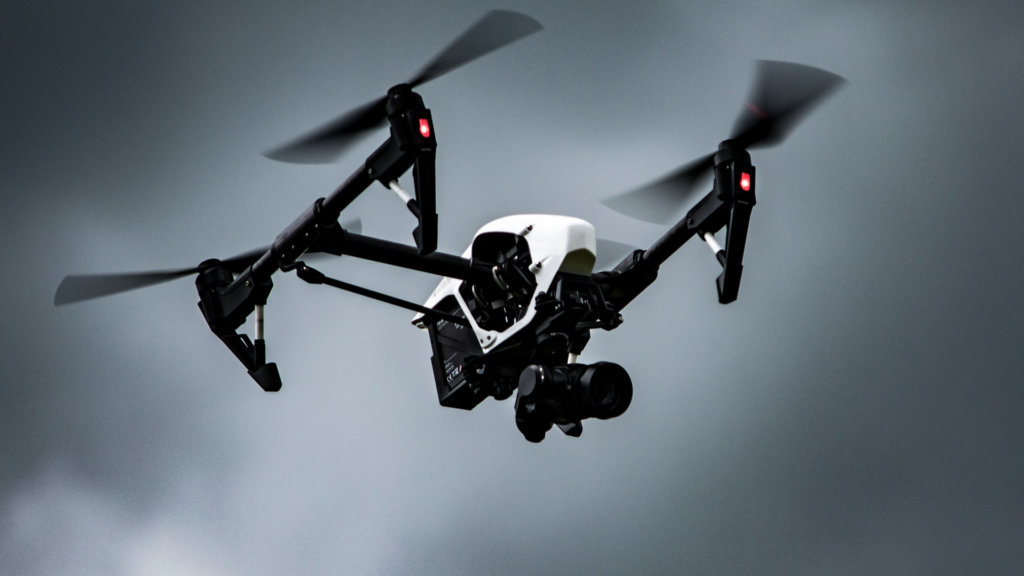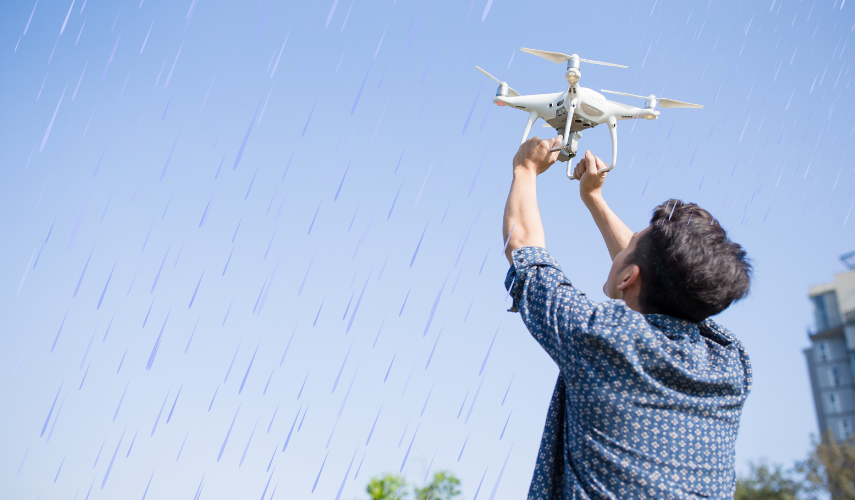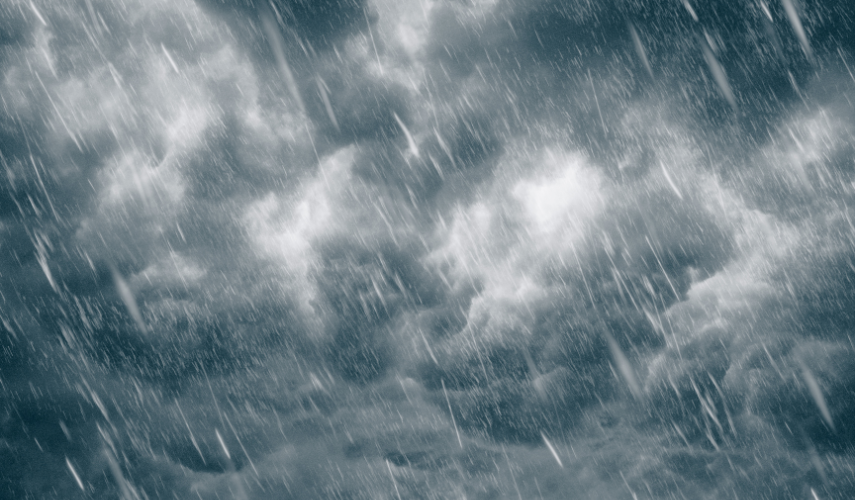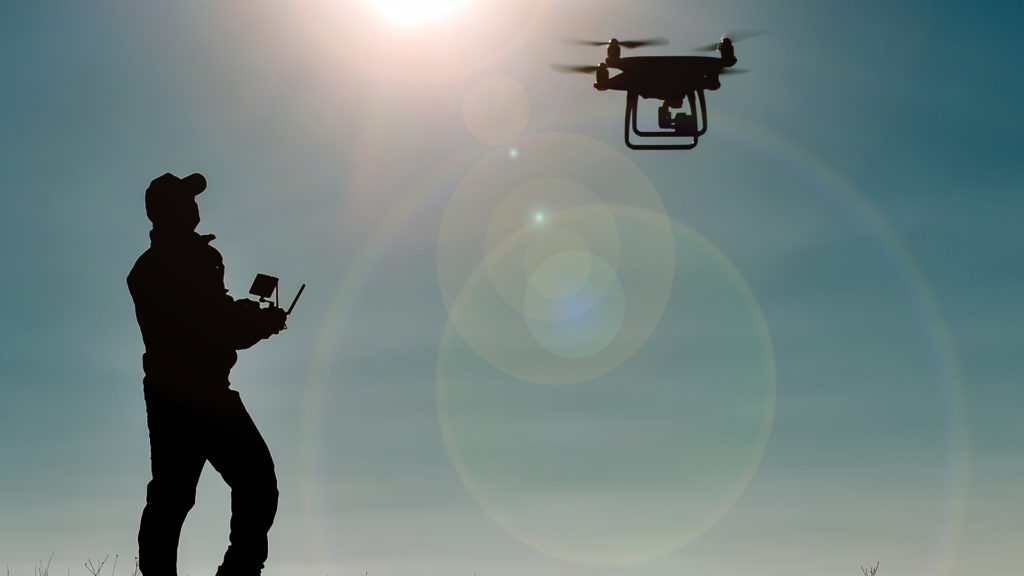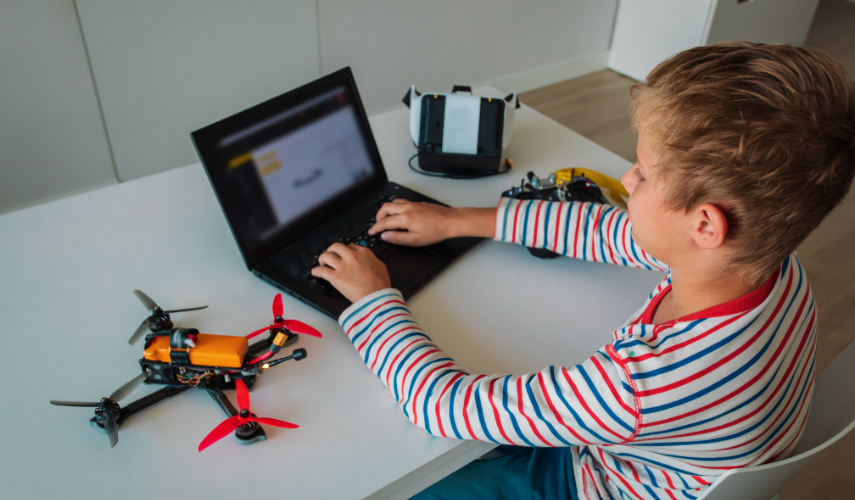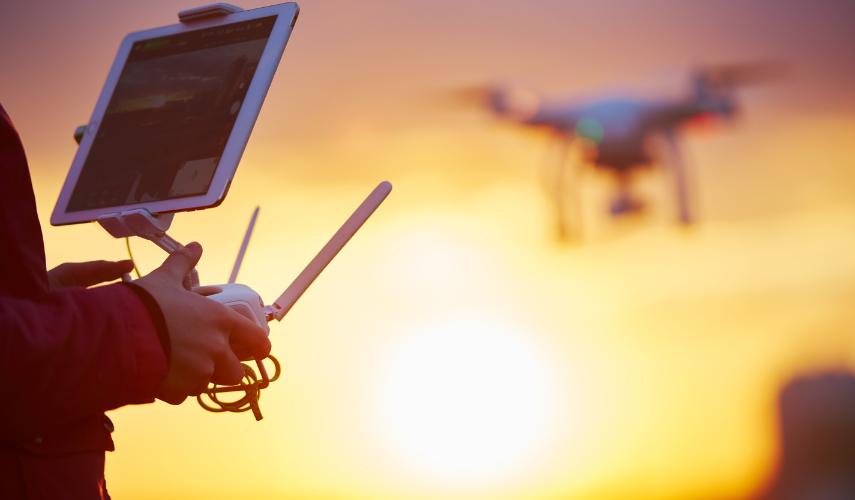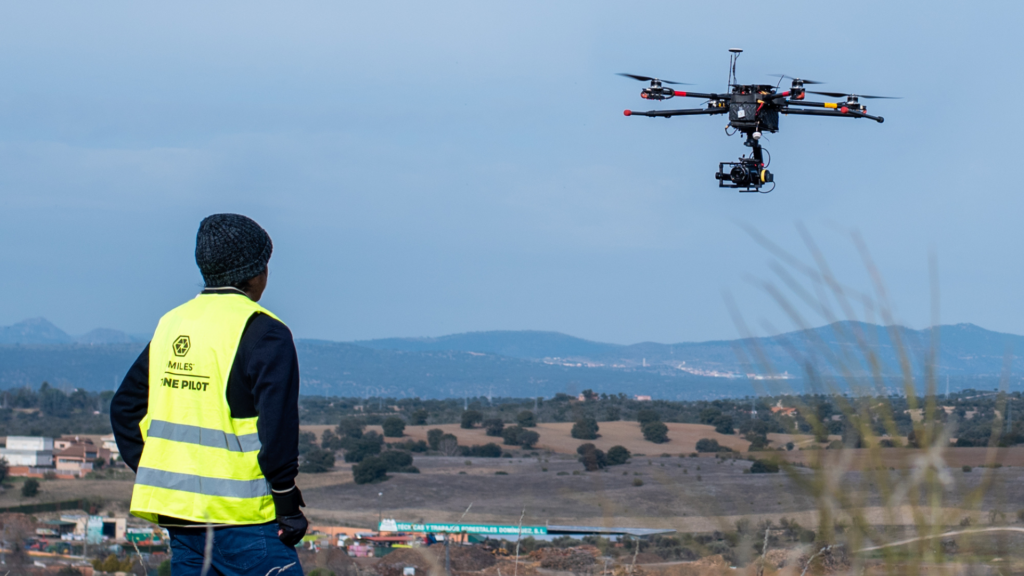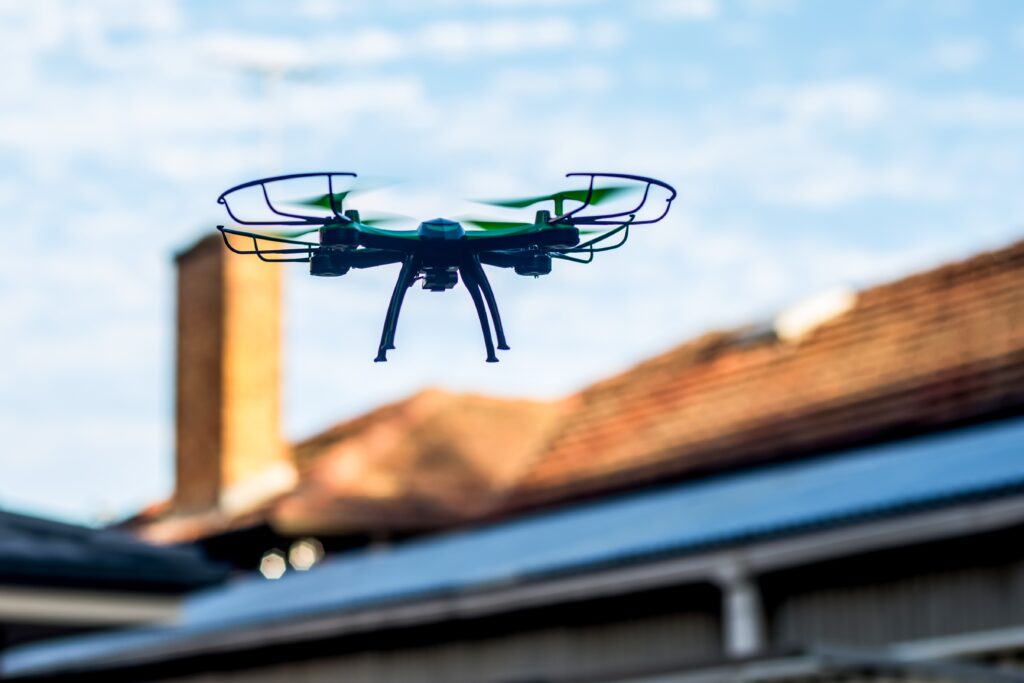When it comes to choosing the best drone for 8-year-olds, it is important to consider several key factors that ensure both fun and safety when using them. That is why at UMILES we have prepared this buying guide, so that you can get to know a wide range of options and choose the ideal UAV for your little one, among this list of the best drones for 8 year olds.
The best drones for 8 year old
When it comes to choosing drones for beginners, especially those aged 8, you should look for models that are easy to operate, shock resistant and equipped with safety features to prevent accidents.
Here is a list of some of the best drones for 8 year olds, highlighting their main features, benefits and reasons why they are ideal for young pilots in training.
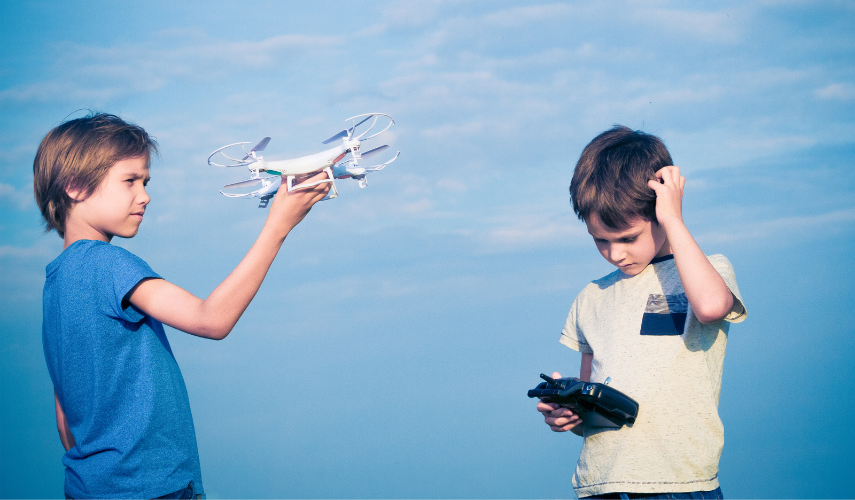
Drone TELLO EDU
It is a programmable educational drone developed by Ryze Tech in collaboration with DJI and Intel, which offers an excellent tool for learning programming languages such as Scratch, Python and Swift, making it ideal for students and educators interested in STEM.
The Tello EDU enables advanced programming and access to streaming video data, opening up possibilities for the development of AI functions such as object recognition and computer vision.
In addition, it includes Mission Pads that allow for greater precision programming and the ability to control a swarm of drones simultaneously. With a flight time of 13 minutes, 720p HD camera and aerobatic flight modes, the Tello EDU combines learning and fun.
Potensic Elfin 2K Drone
One of the best drones for 8-year-olds is the Potensic Elfin 2K. This FPV drone is equipped with a 2K camera, allowing you to take stunning aerial photographs and see the view in real time via a mobile app. It includes two batteries that provide a total of 20 minutes of safe flight time.
This drone is ideal for beginners, as it has an ergonomic remote control and an easy to use take-off/landing function, while its propeller guards and high quality ABS construction allow it to withstand impacts without damaging the device.
Drone ATOYX AT-146
The ATOYX AT-146 is a mini drone designed especially for beginners and children. Despite its compact size, it comes equipped with a camera and WiFi connectivity, allowing you to capture images and videos during flight.
This drone includes functions such as one-button take-off and landing, return mode and headless mode, making it easy to operate, the model offers three speed modes and maintains stability even if the pilot lets go of the controller.
Offering very good value for money, the ATOYX AT-146 is an affordable and fun option to get started in the world of drones. In addition, its anti-collision chassis makes it safe for indoor use. If you are interested in other similar models, here is a list of the best mini drones of the moment.
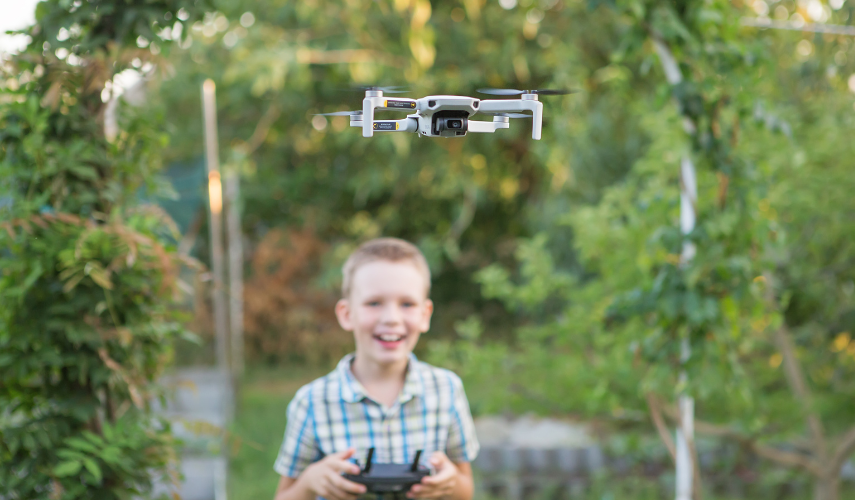
Potensic P7 Drone
It is a lightweight and portable mini drone ideal for children and beginners due to its easy calibration and intuitive use. It weighs 95 grams and has compact dimensions. It offers 720p recording, WiFi connectivity through the Potensic Toy app, and allows real-time video editing and sharing.
The P7 comes with two batteries that provide a total of 20 minutes of flight time. Features include gesture control, adjustable speed modes and propeller guards for safety. Although it does not include GPS, it is a recommendable option for its practical design and user-friendly functions for young and novice users. Here is a list of educational drone games for kids that you can play with the Potensic P7.
XKJ MINI 4K Drone
The XKJ mini is a micro drone with 4K camera and HDR ideal for beginners and children, thanks to its ABS plastic construction, which makes it shock resistant and delivers high quality results in every image.
This drone features advanced flight modes such as altitude hold, route plotting, 360 acrobatics, return to home, and automatic take-off and landing, making it easy to operate. It also includes gravity sensors to enhance the piloting experience and is compatible with 3D virtual reality glasses.
It is light and easy to carry as it weighs only 97 grams, which is why it is recommended to fly it indoors or outdoors without wind due to its light weight. Its flight time is 13 minutes per battery, and it comes with two baterías Li-Po extend the time of use.
EACHINE E65HW Drone
Another of the best drones for 8-year-olds is the Eachine E65HW. It is a compact and affordable model, equipped with a 1080p HD camera that allows real-time video streaming up to 60 metres away. Due to its built-in WiFi, users can take photos and videos instantly and view them on their mobile via an app, allowing direct editing and uploading to social networks.
At the same time, this model is designed with 360-degree protection, preventing collisions and protecting users from propellers. Its functions include altitude suspension, automatic return, 3D rotation, and speed mode with three levels, making it suitable for pilots of different abilities.
In addition, it is equipped with LED lights to fly the drone at night and supports gravity and 3D VR modes with a flight time of 9 minutes per battery.
TECH RC PREDATOR Drone
The TECH RC PREDATOR is a mini drone designed especially for children and beginners. This model is equipped with a 720p HD camera that transmits real-time video to your smartphone or tablet. It facilitates take-off and landing with a single button and features a headless mode that allows for easy control regardless of the direction.
The WiFi FPV function allows users to receive images on their mobile devices, offering an immersive experience. Two batteries are included, providing a total flight time of up to 20 minutes.
Its robust design and features such as propeller guards make it safe and suitable for indoor flights.
SIMREX X300C Drone
It is a mini drone with 1080p HD FPV camera and 110° wide angle view, providing high quality real-time images through its app. Equipped with a 6-axis gyroscope, it offers a stable and safe flight experience.
Its headless mode makes it easy to control when the drone’s orientation is unclear, while its altitude hold function allows it to maintain a constant altitude effortlessly. With a range of 30-45 metres and a flight time of 10 minutes, this drone is suitable for both children and advanced pilots.
In addition, it has three speed modes and can perform 360° twists and turns, increasing fun and manoeuvrability. The SIMREX X300C’s sleek design, similar to the DJI Mavic Air, makes it attractive and modern, and its foldable frame and propeller guards ensure durability and protection.
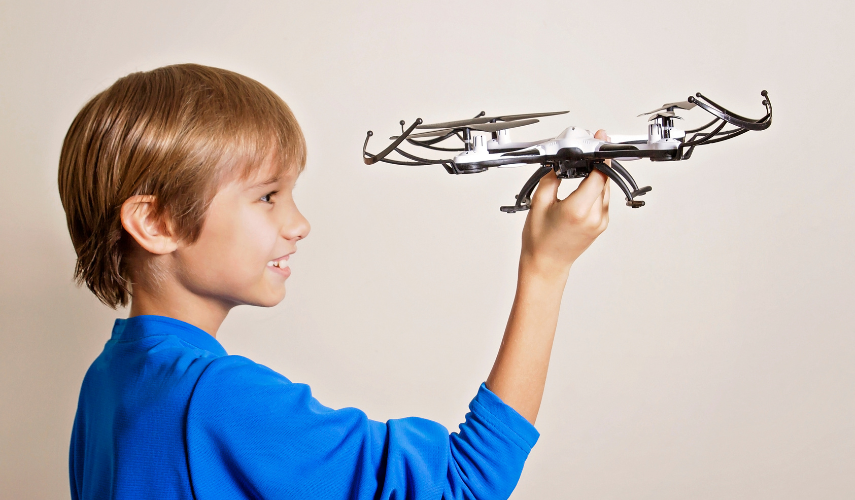
Drone 4DRC-V2
The 4DRC-V2 drone is an excellent choice for beginners and children due to its intuitive design and easy-to-use functions. It is equipped with a 720p HD camera, which allows you to capture and share videos and photos in real time via a mobile device.
Its standout features include one-button take-off and landing, headless mode for easier control and the ability to automatically maintain altitude.
In addition, it offers 3D turns and multiple speed modes (low, medium and high), adapting to different skill levels. With a light weight of 36 grams, it comes with three Li-Ion batteries that provide up to 27 minutes of flight time in total. Its compact design and propeller guard ensure a safe and fun flight, making it ideal for indoor use.
POTENSIC A20W Drone
The Potensic A20W provides an easy and fun flying experience, making it one of the best drones for 8-year-olds. The model is equipped with a 720p HD camera, and allows real-time streaming via Android and iOS devices, offering a direct FPV experience on the smartphone.
This mini drone includes advanced features such as one-key take-off and landing, headless mode and altitude hold, making it easy to control. And with three long-lasting batteries, it offers up to 21 minutes of total flight time.
Its compact and safe design, with propeller guards, ensures the protection of both the drone and the users, making it an ideal model for teaching kids in school, it helps develop dexterity and agility in control, preparing children for the world of advanced FPV Cinewhoop drones.
Now that you know what the best drones for 8 year olds are, you only have to make the decision to choose the ideal one. Remember that at UMILES we not only help you find the perfect aircraft for you and your little ones, but we also prepare you to fly like an expert through our professional drone courses in Spain. So contact us right now and start living an exceptional experience.
